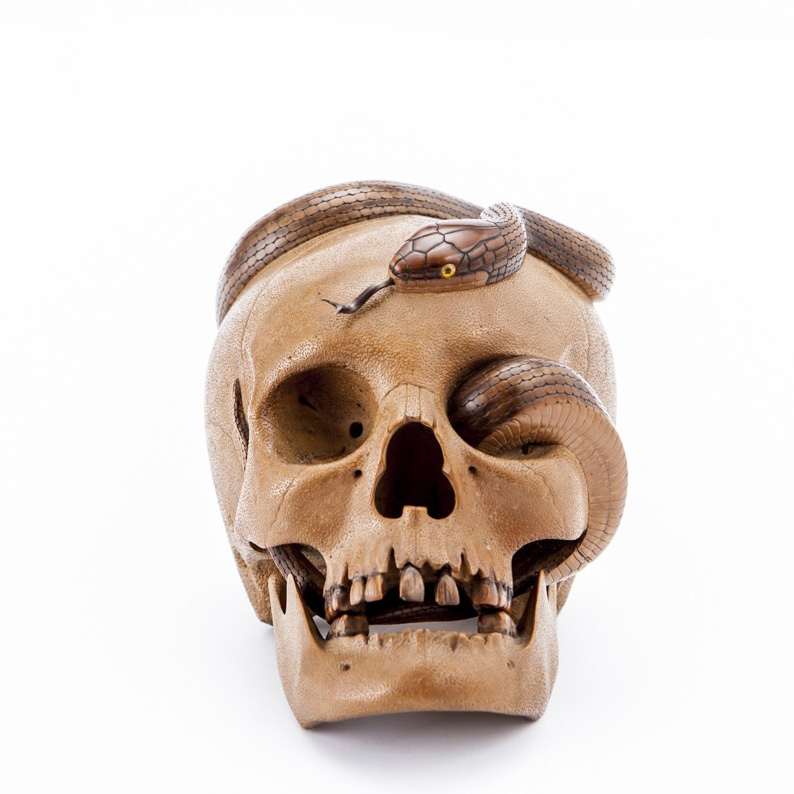Izumi Sukeyuki

Description
Izumi Sukeyuki泉亮之, whose real name was Izumi Toyojirō 泉豊次郎, was born on the 11th day of the 9th month of Tenpo (February 2nd 1838) in the village of Banba, Sakata Canton in Ōmi (now in the city of Maibara in Shiga Prefecture). He was the eldest son of a family of merchants and farmers. Beginning in his earliest childhood, he amazed those around him with his artistic talents. At the age of twenty-five, while visiting Takayama in Hida Province, he became captivated by the works of sculptor Matsuda Sukenaga 松田亮長 (1800-1871), famous for his netsuke and okimono of reptiles and amphibians, and decided to turn to sculpture using Sukenaga's work as a model. As an homage to him, he took the artist's name of Sukeyuki, which has its first syllable in common with that of his master. He quickly acquired a reputation that allowed him to abandon the family businesses and to devote himself entirely to his artistic activities. In keeping with the spirit of the Hida school, he established that reputation on his sculptures of toads and snakes (whence his artist's name Sentei 蟾亭 - "the toads' flag"), and of skulls. The sculptures of snakes slithering through skulls, which represented a synthesis of two of the subjects he had mastered, became his hobby horse. It is said that Sukeyuki had gone to find his models in old burial mounds and had taken anatomy courses from a physician friend in order to gain a better understanding of muscle tendon insertions. It was in 1891 that a well known episode took place that would bolster the reputation of Sukeyeki's skulls but would surround them with a somewhat maleficent aura. On May 10th of that year, in the course of an official visit to Japan, Tsarevich Nicholas (later Tsar Nicholas II) purchased a skull with a snake from Sukeyuki. On the very next day he became the victim of a failed assassination attempt, when one of the police officers in charge of protecting him gave him a blow to the face with his saber. He owed the fact that his life was saved to his cousin Prince George of Greece who parried the second blow with his cane, but not without the attack having produced a 9 centimeter gash on the intended victim's forehead. In spite of the apologies tendered by Emperor Meiji and the resignation of the minister of the interior and of foreign affairs, historians would later speculate on the influence that this incident might have had on the actions that led to the outbreak of the Russo-Japanese War of 1904-1905. The unfortunate incident did not however in any way stain Sukeyuki's renown, and he was awarded a prize for one of his skulls at the Chicago World's Fair (Chicago Columbian Exposition) in 1893. Sukeyuki did not moreover restrict himself to these macabre subjects - the cane of Prime Minister Okuma Shigenobu (1868-1912) for example, with a snake entwined around it, has remained famous. The sculpture of a pair of mejiro passerines (Zosterops japonicus) in their cage commissioned by the Imperial House of Japan for the marriage of Crown Prince Yoshihito in 1900 is also worthy of mention. In 1920, shortly before his death at the age of 82, he created a magnificent statue of the mythical hero Yamato Takeru no Mikoto for the Shinto sanctuary at the summit of Mount Ibuki.